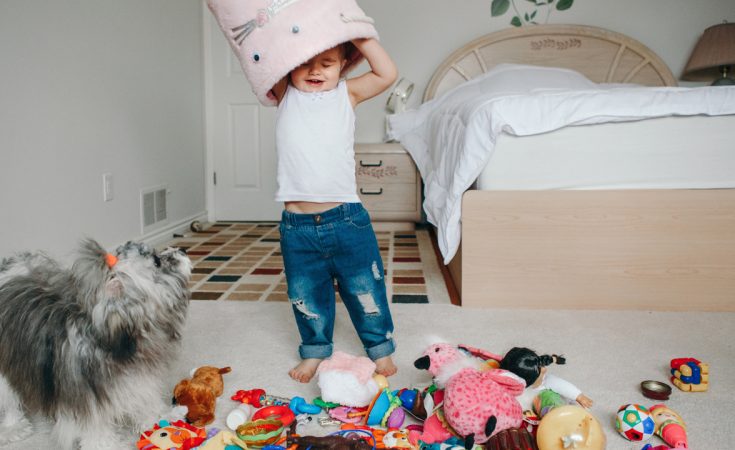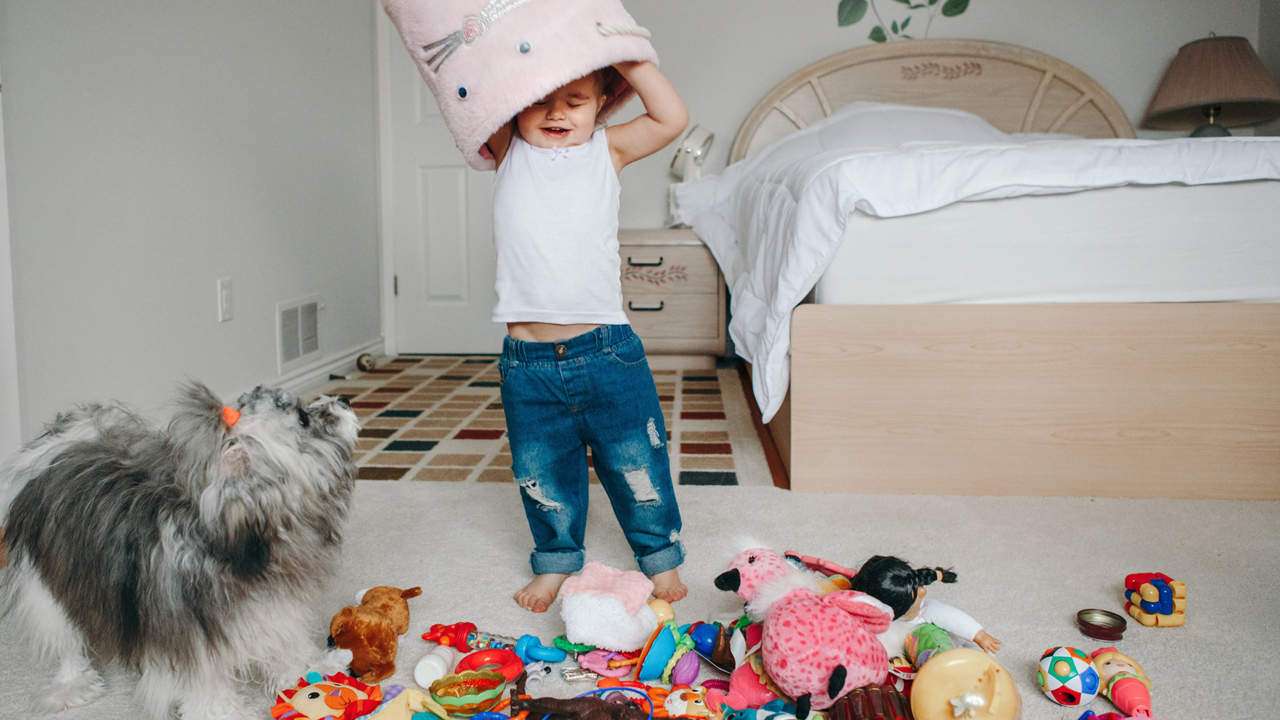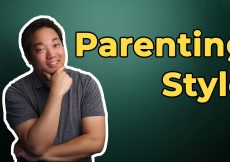We all want to keep the chaos at bay, but you might be making your life harder by wielding too much control over your kid.
Toddlers, amiright? Unpredictable, destructive, stubborn and volatile, they can swing wildly from cuddle bug to incensed teenager to drunk uncle and back again in less time than it takes to change the channel from Paw Patrol to The Wiggles (neither of which will actually be what they wanted). Which is why we as caregivers try to wield as much control over them possible. From car seat tantrums to battles over weather-appropriate clothing and everything in between: They want control, we want them to keep their pants on at circle time.
What I wish I’d known when my first kid was a toddler was this: Let them win.
Not with everything, of course, but with the things that have the least impact on me, and the biggest impact on them. Whether that’s getting dirty, indulging in the opportunity to say no, or wearing mismatched shoes to the park, there really are some things you can (and should) just let your toddler do. Not just for your own sanity, but because it might actually be good for them.
1. Get messy
This was a hard one for me because I like things neat and tidy. But toddlers don’t. They are impulsive mad scientists, and that’s how they learn. I mean, if you had the chance to live consequence-free, wouldn’t you take off your boots to see what it feels like to squash mud through your toes? Wouldn’t you lie down in the dirt so you could be face-to-face with the potato bug when you rolled over its rock? Wouldn’t you run full tilt into the lake in your snow pants? So let them get dirty as they engage in that incredible (and fleeting) early childhood curiosity. Pack a change of clothes, bring a plastic bag, print off a laundry stain cheat sheet, and let those inquisitive little people get messy.
2. Engage in risky play
I definitely had to stifle the urge to follow my toddler around the playground and utter “careful!” at the first sign of potential danger (like going down the “big kid” slide). The need to protect our children is hard-wired, and it can be difficult to let that go, even in situations where the risks are low. But we need to let that go for the simple reason that it’s actually good for them. Research suggests that risky play in early childhood can help develop self-confidence, resilience and executive functioning. It’s also an important way for kids to learn about the world around them, as well as their own abilities to navigate that world. So let him climb, roll, swing, tumble and stumble. And be ready to dust them off if they takes a header off that slide.
3. Practice independence
An extension of risky play is letting your toddler practice independence—by exploring a park, indoor play space, social get together or familiar shop—without you at literal arms reach. This doesn’t mean leaving her unsupervised but it does mean giving them space to practice her own independence and autonomy in a safe setting. By giving your toddler some room to explore their surroundings alone, they’ll gain self-confidence and new social skills, while learning patience, co-operation and self-reliance. The best part is that when they need a break from being outgoing and brave, they’ll come running back to your arms for a hug and a snack (mostly a snack), and there’s no sweeter feeling than a toddler wrapped in your arms.
4. Say “no”
I had this idea going into parenthood that my job was to teach my children respect, Aretha Franklin-style. At the time I thought that meant compliance, but I realize now that my toddler’s defiance (depending on what I was asking of her) was neither a sign of bad parenting, nor a child on the fast track toward truancy. Her little nos were her first sign of willpower, experimenting with control, and practising bodily autonomy and consent. Obviously this power struggle will continue long after toddlerhood (help us all). But ultimately, I try to make sure my kids get their way at least once a day.
They can’t say no to things that would risk their health or safety: They have to wear seat belts, hold my hand while crossing a busy road and wear shoes at the mall. But if their “no” isn’t particularly egregious, I take the time to find out why they “don’t a-wanna.” No to bath time before bed? How come? Can we make a deal, then, that we’ll have a bath in the morning? No to cucumbers on your plate? Why not? If not cucumbers, please pick one other fresh choice. But in giving in to the occasional no, you’re learning about compromise and workarounds, and teaching your tot that they do have power to make their own decisions (sometimes). Remember, they hear “no” all day long. That would make me flop on the floor and pound my fists, too.
5. Try on their own
This can be heart-palpitatingly frustrating if you are in a rush for any reason (which I’m guessing you usually are, because you have a toddler). But on those rare occasions when you aren’t running late and trying to herd all the cats out the door, let your toddler try on their own: Try to put their shoes on, try to brush their teeth, try to balance on the curb as you walk to the park. Is there a chance they’ll get frustrated at how difficult it is and melt down? Absolutely. Will they do that anyway if you say, “No, let me do it for you”? Absolutely. This circles back to the idea that toddlers’ brains are developing at the speed of light, which is why they crave experience, repetition and the chance to learn. That learning will slow you down at the front entryway as they try to get their shoes on the wrong feet, but it’s just what they need right now.
6. Choose
Parents who need to feel a sense of control for your own sanity: this one is for us.
I tend to fly through my day like a drill sergeant, working hard to keep the well-oiled machine of my family running smoothly, thus limiting chaos. I lay breakfast dishes out the night before, I choose my kids’ clothes for the week and put them in labelled bins in their closets. Everything is curated because life is so, so much easier that way.
Which is why it throws me for an absolute loop when one of my kids comes out of her bedroom wearing an outfit fit for a rodeo clown as opposed to the one I had placed in her “Tuesday” bin. Toddlers will want to wear a parka to daycare even though it’s May. They’ll want the blue plate with their banana, not the yellow one (“Your food tastes the same regardless of the colour of the plate” is a phrase we utter almost daily in our house). They’ll want to wear their stegosaurus costume to PetSmart. And they’ll fight to the death for their right to make that choice. Some of our least-tantrumy days are ones in which I give them a choice first, so we don’t even have to fall into that power struggle. “Would you like the blue plate or yellow plate with your breakfast?” “Go feel what the temperature is outside, and then come back and choose one of these two coats.” You’ve essentially already chosen for them by narrowing it down to two or three options, but they feel like they’re getting that coveted control.
At the end of the day, navigating life with a toddler can feel like navigating a minefield. The mood swings, the outbursts, the random acts of violence, the noise… It can all make you feel like you’re losing your mind. But once you start to learn that there’s method to the madness of their little brains—that they’re hard-wired to be explorers and scientists and masters of their own destiny, and that there are developmental explanations for all of this—you’ll be better equipped to make it through that land mine, while supporting their wild and wacky needs.



































